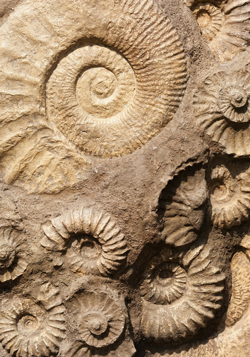Nadine Gabriel reports on how southwest Britain fascinated Georgian and Victorian geologists and fossil collectors, and how this region continues to inspire today.
Gabriel, N., Southwest Britain inspires through the ages.
Geoscientist 29 (1), 27, 2019
https://doi.org/10.1144/geosci2019-005; Download the pdf here

The geology of southwest Britain has influenced many lives. People have collected rocks, minerals and fossils from this region for centuries, and many still do today. On 18 September 2018, the
Geological Curators’ Group and the
History of Geology Group held a joint meeting at the Bath Royal Literary and Scientific Institution (BRLSI) entitled ‘
Collectors, Collections and the Geology of Southwest Britain’. The southwest of Britain is well-known for its stunning geology, but this meeting—with around 80 attendees—also looked back at the people who have dedicated their lives to exploring this geologically diverse region.
The day started off with a keynote speech from Steve Etches, who spent over 35 years collecting fossils from the Jurassic Kimmeridge Clay deposits of southwest England. In 2016, his collection of over 2300 fossils found a home in The Etches Collection: Museum of Jurassic Marine Life in Kimmeridge, Dorset. Steve described the difficulties associated with starting a museum from scratch, but despite the initial challenges, the museum looks incredible and is filled with a diverse array of scientifically important specimens.
Many of the talks focused on the enthusiastic collectors of the southwest, such as Charles Moore [1815-1881], a palaeontologist from Ilminster, Somerset. In 1858, he purchased
three tonnes of gravel from Holwell, Somerset for 55 shillings. This massive purchase took years to sort, but forged a path for bulk fossil collection—it turned out to be filled with Rhaetian-aged (208.5 to 201.3 million years old) fish, mammal and reptile fossils.
Moore also collected fossils from the Lower Jurassic limestone of Strawberry Bank, a once working quarry just north of Ilminster. These remarkably well-preserved fossils, some with three-dimensional preservation, are now cared for by the BRLSI, who recently collaborated with the Palaeobiology and Biodiversity Research Group at the University of Bristol, as part of the Jurassic Ecosystem of Strawberry Bank Ilminster (
JESBI) project. The project aimed to understand the diversity of this Jurassic ecosystem and gain an insight into how these fossils were preserved; the findings were published in the 2015 review paper ‘
The Strawberry Bank Lagerstätte reveals insights into Early Jurassic life’.
Georgian and Victorian interest in collections from southwest Britain was not limited to just fossils. Sir Francis Basset [1757-1835] collected many minerals from Cornwall since his estate included several mines. Basset’s collection contained classic Cornish minerals such as cassiterite, native copper, siderite and olivenite; some of these were donated to the BRLSI in 1826. Another Cornish mineral collector, Richard Talling [1820-1883], amassed minerals when mining activity in Cornwall was extensive. Between the 1850s and 1860s, Talling sold some of his minerals to the British Museum for £20-100 per lot, which is a fortune because the annual wage at the time was just £40-90 per year.
Other talks during the conference looked much farther back into geological time. For example, we learnt that around 435 million years ago, Beacon Hill in Somerset was a volcanic arc similar to the Lesser Antilles in the Caribbean; during the Late Triassic, spores of
Naiadita sp. (a type of liverwort) floated across the Bristol region; and in the ice age caves of Pleistocene Plymouth, humans, hyenas, cave lions, wolves and woolly rhinos roamed.
The relationships between geology and architecture were also discussed, with presentations on the geological origins of the limestones used as building stones in Bath (if you look closely at the stones, you’ll find fossils and sedimentary structures), and how the construction of Brunel’s Great Western Main Line led to the discovery of exceptional fossils in 1841. For cartography fans, geological maps featured too. In 1864, William Sanders [1799-1875] published a 720-square-mile geological map of Bristol and surrounding areas that would have cost £300 in today’s money.
One take-home message was the global influence of the geology of southwest Britain: many museums across the UK and abroad are now home to important and fascinating specimens from the region. But you don’t necessarily need to travel to explore these collections—the BGS have online catalogues of the
rocks,
fossils and
minerals transferred from the Royal Geological Society of Cornwall.
Nadine Gabriel is a recent UCL geology graduate and an emerging museum professional. She is a Geology Collections Assistant for the UCL Earth Sciences Department and a Fossil Mammal Collection Volunteer at the Natural History Museum, London; e-mail:
[email protected]